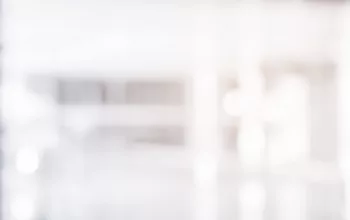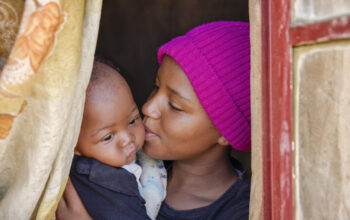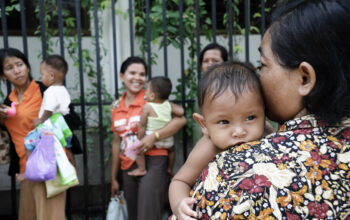Five Questions to …. Andréa Vassalotti
On the occasion of Fight the Fakes Week 2019, we talked to Andrea Vassalotti, Director of Partnerships and Programmes at the World Heart Federation (WHF), about the importance of recognizing the issue of substandard and falsified medicines as a public health threat, and the efforts that must be made to address the problem effectively.
Why is it important for those in the cardiovascular disease field to fight substandard and falsified medicines?
Nearly 18 million people died from cardiovascular diseases (CVD) in 2016, making it the world’s leading cause of death. More than three quarters of these deaths occur in low- and middle-income countries (LMICs). Risk factors such as tobacco and alcohol, unhealthy diets, obesity and physical inactivity need to be addressed. We also rely on safe and quality medicines to control hypertension and prevent the onset of certain CVDs. However, LMICs often lack the infrastructure and resources to provide the integrated primary health care services required for proper CVD prevention, detection, treatment and rehabilitation.
Poor quality and falsified medicines are worsening the already poor situation of CVD treatment in LMICs. The World Health Organisation (WHO) estimates that 1 in 10 medical products circulating in developing countries is either fake or substandard. An analysis of cardiovascular medications across 10 sub-Saharan countries is even more worrisome: 1 in 6 cardiac drugs was of poor quality. For hypertension, 25% of medicines were found to be substandard or fake.
The consequences of consuming fake medicines are far-reaching, ranging from being wholly ineffective to worsening a patient’s condition, causing further illness or even death. Curbing the spread of fake medicines while making high quality, safe CVD medicines accessible for patients in LMICs is crucial if we are to tackle the world’s biggest killer.
What policy recommendations is the WHF putting forward in relation to substandard and falsified medicines?
A study analysing the availability and affordability of CVD medicines across 18 countries revealed that up to 60% of households in LMICs cannot afford them. Yet, finding achievable solutions to issues of quality and safety doesn’t need to be daunting. For this reason, in 2018 the WHF convened its Global Summit on Circulatory Health accompanied by a position paper on Access to Essential Medicines for Cardiovascular Disease.
To ensure access to essential medicines, governments need to strengthen their national health, regulatory and information systems. And, if we want to curb the spread of falsified and substandard medicines, regulatory agencies must have the necessary resources, capacities and expertise to address the menace they pose both to people and healthcare systems.
Countries should therefore work closer together with the WHO’s Global Surveillance and Monitoring System for Substandard and Falsified Medical Products to improve the collection and analysis of accurate data and use these to inform prevention, detection and response efforts.
What innovations are you seeing on the ground and how can we accelerate their implementation in order to curb the spread of falsified medicines?
Digital health solutions, such as mHealth and artificial intelligence (AI), are vital tools in the fight against falsified medicines, particularly in countries with weak regulatory and law enforcement systems.
The WHF came across many inspiring digital solutions changing the medicines landscape for the better at the 4th Global Summit on Circulatory Health. For example, Nigerian entrepreneur Adebayo Alonge developed a portable nano-scanner, based on AI technology, that allows the user to verify a medical product by scanning a barcode on its packaging. Similarly, Bright Simons, a tech entrepreneur from Ghana, built a mobile verification service that enables consumers to verify a product’s quality via text message. So, relatively simple solutions can become game-changers in the fight against falsified medicines.
The next step is to find the means and resources to scale up these solutions. In my view, governments and intergovernmental agencies in all countries, should be using the insights and experiences of these local entrepreneurs to come up with large scale sustainable solutions against falsified medicines.
How can we push for the fight against substandard and falsified medicines to be streamlined in universal health coverage?
The adoption of the United Nation’s Political Declaration on Universal Health Coverage (UHC) was considered a milestone for global health. As the problem of substandard and falsified medicines has so far received scant attention, it was great to see the declaration speak of ‘fostering awareness about the risk of substandard and falsified medical products’. But this is still far from enough.
I think there is a great momentum to push for greater recognition of the fake medicines issue and its consequences for patient safety and, ultimately, UHC. Dr Tedros, WHO’s Director-General, recently endorsed the Oxford Statement – that called for investment, policy change, and action to eliminate falsified medical products and was signed by over 30 organisations. This is a good initial step but more organisations need to step up their efforts and take action against this under-recognized global health threat.
Moreover, frontline healthcare professionals, from community health workers and nurses to physicians, are key to ensuring safe dispensing of medicines and raising awareness around fake or substandard drugs. Therefore, governments must invest in the health workforce as a key pathway to improving access to quality medicines. WHF will continue its advocacy on these key issues at the 5th Global Summit on Circulatory Health in Washington DC between 15-17 June 2020 on “Rethinking the Future of the Cardiovascular Health Workforce”.
How can we leverage partnerships more effectively in the fight against substandard and falsified medicines?
The Fight the Fakes campaign has effectively brought together stakeholders working in different disease areas and sectors, including the WHF, becoming a global voice fighting against falsified medicines and for patient safety. We now need more concrete action at country-level. National agencies should better engage with local partners in educating people on the dangers of falsified medicines and helping to build up on-the-ground capacity to combat them. People living in LMICs are at greatest risk of illness owing to inadvertent consumption: they should be the focus of all our efforts.
This week’s second annual Fight the Fakes Week should bring this issue to the forefront of global health discussions. It deserves widespread support!
Author





